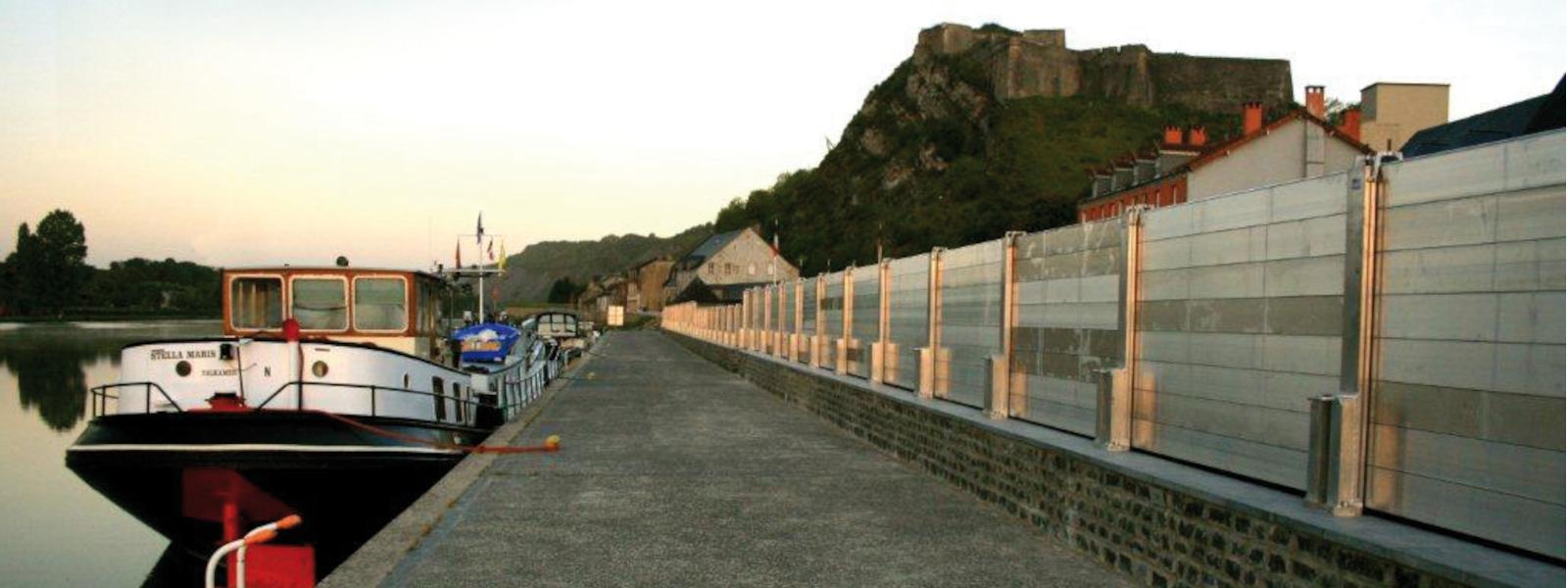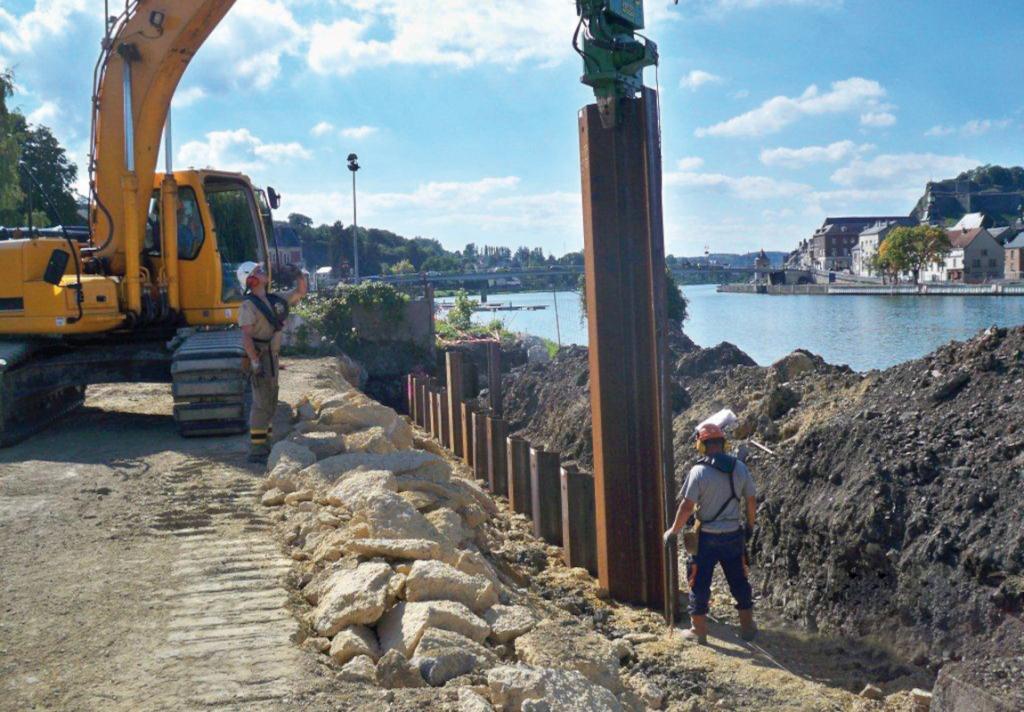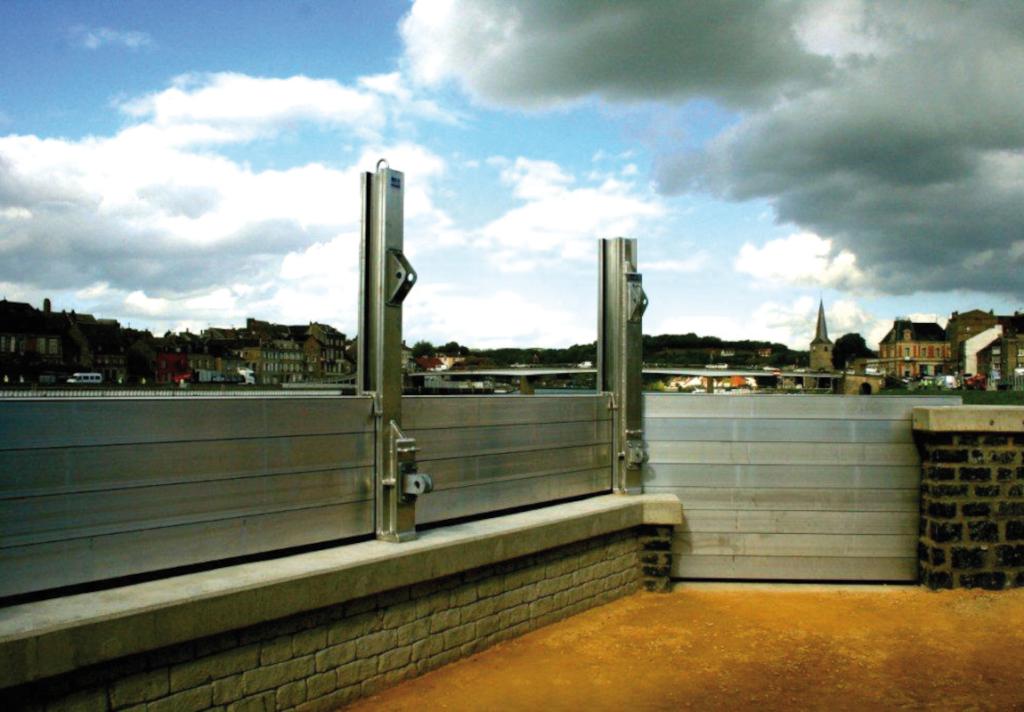Flood defence, Givet, FR | 2010
The groundbreaking flood defense project in northern France
The €20-million project to protect the town of Givet in northern France began in 2006 after devastating floods in 1993 and 1995. The last phase of work began in 2010, including preparatory groundwork, installation of sheet pile cutoffs, slabs, and concrete walls for demountable aluminum flood barriers. Covering a footprint of over 2900 m2, this 3 km-long project is the largest of its kind in France.
A special feature of the project is its demountable protection, like other European towns such as Bewdley in England and Cologne in Germany. The Meuse River's slow and gradual flood rise allows for predicting and reacting to rising water levels upstream. The installation time for the demountable barriers is estimated to be 48 hours.


 English
English
 German
German
 French
French




